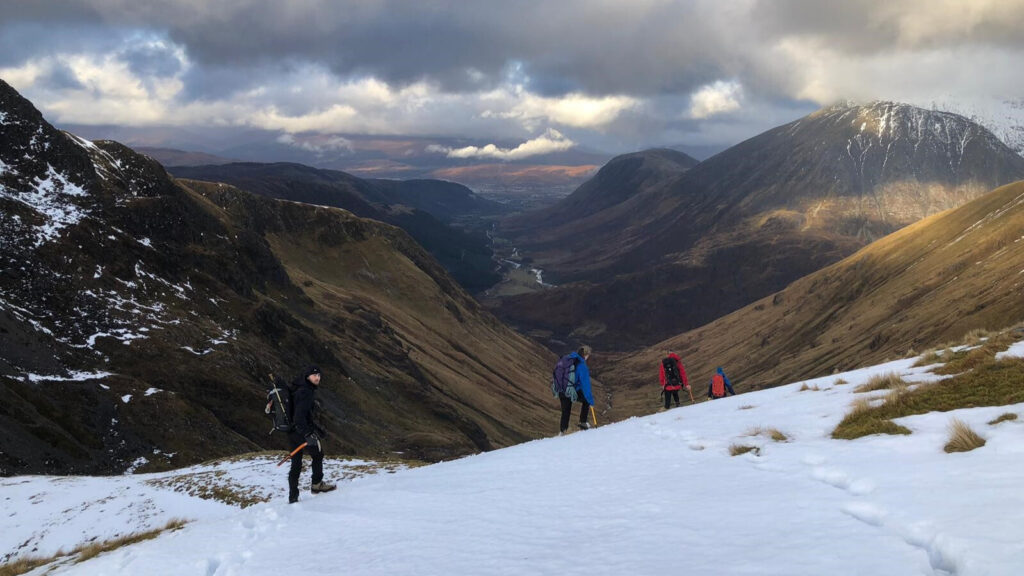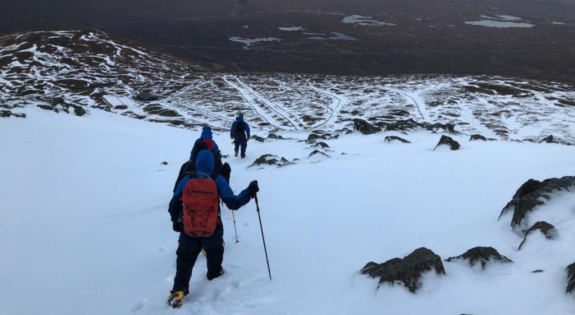News
April 13th 2023
Reserves tackle winter mountaineering in unpredictable Scottish Highlands
Reserves from the East Midlands University Officer Training Corps traveled to Scotland for a snowy expedition in January.
Exercise Dragon Highland pushed the university students, who balance army training alongside academic studies, out of their comfort zone.
Seven universities are affiliated with the Training Corps: the University of Lincoln, De Montfort University, Nottingham Trent University, University of Nottingham, University of Leicester, University of Loughborough and the University of Derby.
The trip provided 24 individuals with an opportunity to progress their leadership skills while undertaking resilience and mountaineering training in challenging and sometimes unpredictable conditions.
The Winter Mountain Foundation qualification was also achieved by all participants who were not previously qualified.
Axes, boots and crampons
The expedition began on the 6th of January in the village of Kinlochleven, Scotland, with students collecting loan equipment such as ice axes, boots, crampons and emergency gear. Thank you to the loan pool which plays a vital role in the success of these types of trips.
Split into mixed-ability groups, the students were tasked with understanding their safety equipment and exploring their own training aspirations, knowledge and experience. They practiced movement with crampons, using the layering system to keep warm, and axe ice arrest climbing up the mountain Meall a’ Bhùiridh (1,108m). For many, it was the first time they had walked up a Munro: a Scottish mountain with a height of over 3,000 feet (approximately 914m).
On day two, each group built on what they had learned previously, with one choosing a challenging snow-filled gulley up Stob Bàn (999m), testing crampon work and ‘kicking steps’ into the snow. Another practiced avalanche drills to give them greater confidence should one occur.
Life-saving snow shelters
With a big hike planned for the next day, many groups embarked on shorter treks on day three. One used this day to travel to the Cairngorms mountain range, visit the Commando Memorial at Lochaber, and complete an overnight expedition, staying the night in a bothy. Another navigated an icy ridge to reach the summit of Stob Coire nan Lochan (1,115m) while many took the opportunity to finesse their rescue skills.
Some groups took advantage of the time, and good snow, to build snow shelters. Students competed to see who could build the best emergency snow hole in 20 minutes – the expected time you have to build a shelter – to shield them from the elements. They all discovered how tiring, yet critical, this lifesaving skill is.
Day four proved to be the most rewarding of the expedition, with individuals needing to draw on all of their skills, training, and resilience to conquer tough routes and conditions.
Two of the groups aimed to summit Ben Nevis (1,345m), the highest peak in the UK. However, one group, taking an alternative passage, was unable to complete the ascent due to the risk of an avalanche, which proved the importance of regular dynamic assessments. Nevertheless, it was still a huge learning opportunity.
The group that traveled to Glenfeshie, in the Cairngorms, reached Mullach Clach a’ Bhlair (1,019m) peak, which had whiteout conditions at the top. Finding the exact summit proved challenging but was an excellent opportunity for students to be pushed out of their comfort zones.
The final group used this day to prepare for their long hike and a night in a bothy. They traveled by train and got off at the infamous ‘Trainspotting’ platform at Corrour before walking in the dusk to their overnight shelter.
The final day enabled each group to consolidate the week’s training. Some groups practiced ice axe arrests, built snow holes and consolidated their avalanche rescues. They also simulated a real scenario using a buried transceiver in the snow, locating it using other transceivers, probes and shovels.
One of the groups managed to conquer a final peak, Beinn a’ Chaorainn (1,083m), which involved climbing a ridge, using ice axes and crampons. The route was the definition of adventure training: controlled exposure to risk, as on either side of the ridge was a steep rocky drop. This was a great opportunity to practice climbing and learn how to spot each other on tricky routes.

Mountain leader pathway
The course gave the students a fantastic introduction to the skills required for winter conditions. The resilience and determination required to cope with these conditions are qualities the students will carry for life. Many are now looking to gain more mountain days to start the journey on the mountain leader pathway.
Officer Cadet Izzy Spary said: “I feel so fortunate to have been able to go on this course and would never have been able to learn the skills taught to me on this trip by myself.
“I feel so much more confident in winter mountaineering and it has inspired me to get more quality mountain days to get on the next course.”


